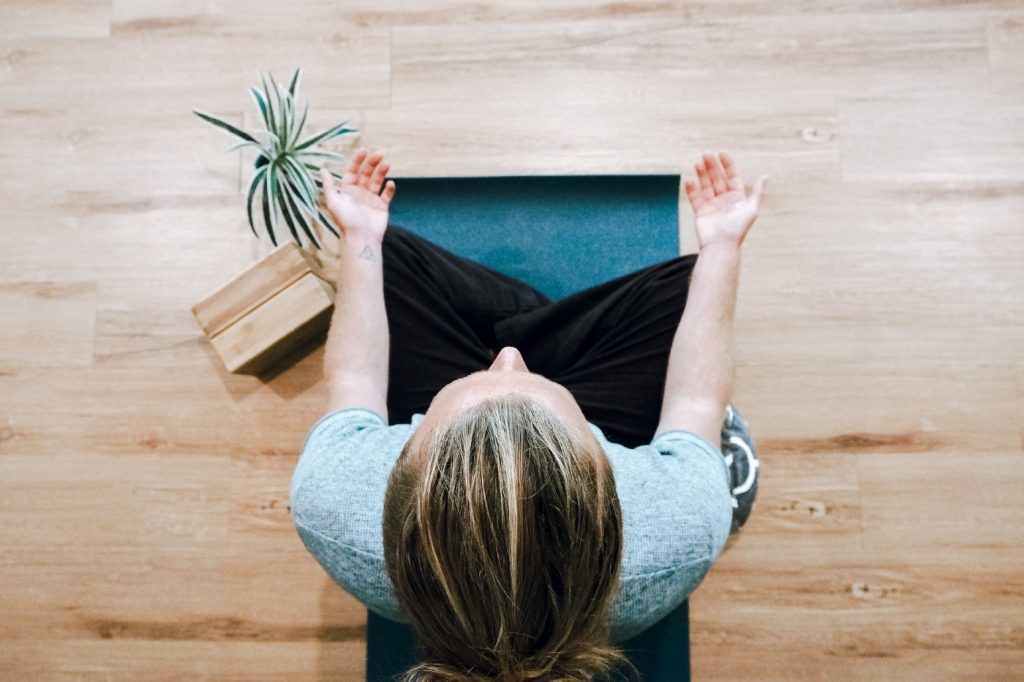By Susie Hopkins
You would have to have been living under a rock to have not heard over the last few years that meditation is good for your mental health. And I’m yet to meet someone who has given regular meditation a really good go who hasn’t found it really beneficial.
And for those of us who have kids with complex needs, we know that looking after our wellbeing is more important than ever and meditation is a great way to do this. In reality, though, even people with much less demanding lives find it difficult to embed meditation into their routine.
You might think that being told there is a free, highly effective way to improve your wellbeing, relationships, parenting, productivity and more would provide enough motivation to get started. But it’s not that simple.
For every person who has developed a meditation practice and knows of its benefits first-hand, there are many others who would like to but haven’t yet managed to. That’s because it’s not easy. Stopping, being still and quiet, just simply ‘being’ instead of ‘doing’ goes against every fibre of our being (ironically!).
Our culture places a lot of importance on doing and there are a thousand demands calling us to get things done. Learning to stop and be still doesn’t have to be difficult though. It all starts with managing our expectations and some guidance from an experienced meditation teacher also really helps.
As a solo mama of my autistic son who has substantial needs and a meditation teacher myself, I hope you find these simple strategies helpful because meditation has been an absolute life-saver for me. I have no idea how I’d survive without it.
Don’t expect anything (special)
Many people who try meditation, give up at the outset because they’re sure that they just don’t ‘get it’. Often, when you unpack this idea, it’s generally because people expect to experience something different to what they actually do. It seems too far-fetched that simply sitting (or lying) and doing nothing can, in itself, lead to any benefits.
Thoughts of doubt and confusion may dominate your thinking, for example ‘this is nonsense’, ‘this doesn’t make sense, ‘how could just sitting here help me be more calm?’ Or even thoughts of self-judgement, ‘I can’t be doing this right’. And these thoughts can quickly turn you off before you experience any benefits.
This way of thinking is so common that I suspect having expectations that meditation should feel a certain way is the single most common reason the vast majority of people who try meditation don’t persevere with it.
It is really important to start with an open-mind and try to notice any assumptions you might have about what mediation is or should feel like. Although, these thoughts are perfectly normal so simply notice them with an attitude of curiosity and don’t let them turn you off.
Don’t expect to feel relaxed
While some people will feel relaxed when they try meditation, many don’t and this is also perfectly normal. For many, stopping and being still can lead to thoughts and feelings that are far from pleasant, let alone relaxing. And this doesn’t mean that it is ‘not working’ or that you are doing anything wrong.
Many will experience incessant and sometimes unpleasant thoughts and/or uncomfortable sensations as you stop ‘doing’ and try to learn for the first time how to just ‘be’ instead.
(It’s important to remember that if you are very overwhelmed by distressing thoughts and feelings – or if you have a history of mental health problems – it is a good idea to learn meditation with an experienced teacher and/or a mental health professional. At the very least, listen to your body and always stop if you feel at all concerned about your mental wellbeing).
For the vast majority, though, this isn’t a concern. It’s normal and kind of the point. By creating the space for these thoughts and feelings to arise, you’re shining a light on the unrest you’re experiencing under the surface. Over time, once you understand how to bring more acceptance to these kinds of thoughts and feelings and simply let them arise and fall away, they are very likely to settle and leave you with more peace of mind.
I imagine you might be asking ‘Why would I want to meditate if it isn’t relaxing?’ That’s a fair question. For many, it is not during meditation that they will feel the benefits, it is later as they go about their days that the benefits are experienced. Over time, meditation is more likely to feel relaxing. For me, and many others, we crave it if we don’t do it. But it can take a while to get to that point.
But don’t think that enjoying meditation is likely to be some far-off unattainable ‘goal’. Of course it depends on the person, but more calm, if you stick at it, is not so far off. And remember, that’s what meditation is all about; the present moment. And it’s not really about the practice itself, but how it permeates more calm, acceptance and joy into your life and especially into your relationships.
Don’t try to have no thoughts
Another very common reason why so many people give up meditation before experiencing any of the benefits is the misconception that they can’t do it. It drives me crazy how many meditations imply that you should have no thoughts while doing it. So keep this in mind if you’re listening to guided meditations.
This is a great segue to define meditation and what it is exactly and perhaps more importantly, what it isn’t. While the word can be used in different ways, for the purpose of helping beginners grasp it, I use a definition that I first heard at a symposium about the science of meditation I attended many years ago.
It defined meditation as:
A practice in which you place your awareness somewhere other than on the automatically generated thoughts in your mind.
The beauty of this simple definition is that it demonstrates that thoughts arise automatically in our minds. This is normal and sometimes when we start meditating, our thoughts can seem louder and busier than ever.
The mind thinks, just as the heart beats. Even the most experienced meditators have thoughts that arise during meditation. It’s the practice of noticing your thoughts and returning your awareness to the present that is thought to be one of the most important elements of meditation practice. In doing this over and over, you are using part of the brain that helps you manage your emotions. I have heard a neuropsychologist refer to it as doing “reps for emotional stability”.
All you have to do is simply notice and mentally acknowledge your thoughts and then place your attention back on whatever you are focusing your awareness on in the meditation you are doing (for example, your breath or sensations in your body).
Set yourself up for success
Now that you hopefully have more clarity about what to expect and what not to do, here are a few very simple practical tips to set yourself up for success.
Start small. Try doing just five minutes a day, or perhaps even three or four times a week and build up slowly over time. If you’re finding this easy, do more, but don’t pressure yourself to do long periods of meditation in the early days, especially if it’s not enjoyable.
Do guided meditations. This is a particularly good idea if you have a very busy mind. Having an experienced teacher lead you in a meditation designed specifically for beginners is incredibly helpful early on. Here is a brief mindfulness meditation on the breath for you to try.
(There are others to try in the Resources section on the Lilo Wellness website which you can reach through the above link if you want to try a longer meditation. The bodyscan meditation is one that many people find very relaxing).
Use reminders. Putting a reminder in your calendar on your phone is a simple way to help you get into the habit of meditating regularly.
Create a space where you won’t be disturbed. Easier said than done for busy mamas but, as much as possible, try to set aside a time when other family members are either asleep or will leave you alone so you can meditate in peace. And be aware that complete silence is not necessary. Headphones can help, but if you can still hear noise, simply notice the noises – and your reaction to them with curiosity – as part of the meditation practice.
Most importantly, be kind to yourself
Finally, go gently on yourself. Developing new habits, and particularly new habits of mind, is not easy. Don’t expect it to stick the first time around. But try not to lose heart and give up either. There are lots of ways to make it easier and with the right guidance, it doesn’t have to be so difficult.
These suggestions are just the tip of the iceberg, there are many ways to make the journey to becoming a regular meditator much easier. My final tip, if you really want to succeed in creating a mindful life and experiencing all the benefits for you and your family sooner rather than later, consider working with an experienced mindfulness teacher to turbocharge the process of embedding meditation into your life, for life.
It really does make a huge difference. We gladly go to university to learn about a subject for our chosen profession for three years or more and invest tens of thousands of dollars. Yet we rarely invest in ourselves and our family’s peace of mind in other ways.
The knowledge and experience you will gain from an experienced meditation teacher will leave you with skills that will ensure a life of more peace and more joy for your whole family. No other investment of your time has a return as valuable as the wisdom you will gain from investing in yourself in this way.
Good luck!

Learn how to feel less stressed in under an hour
A FREE crash-course for parents of kids with special needs – Because when you’re less stressed your whole family benefits.
Specially designed for time-poor parents and carers, this concise course is packed full of actionable insights to help you create a life with less stress for the whole family.
It has been created by Susie Hopkins who is a Registered Nurse, has a Masters of Public health and yoga and mindfulness qualifications. She has been teaching stress management for almost 10 years and is also the sole parent of an autistic child.
Click on the link above for more information.




